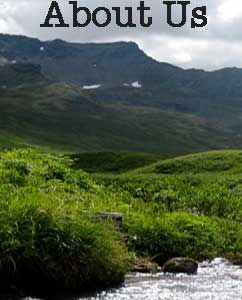First, you fillet the fish and and get rid of all the parts you don't want. For example, this fish had a chunk missing because a seal tried to eat it. We did not want to eat the same part.
Then you end up multiple coolers full of beautiful looking fillets.
At this point, you can give them a final cleaning and rinsing and put them in vacuum bags so they will store nicely in the freezer until you cook them up for dinner. We did this with probably two thirds of the fish.
We also took about ten fish and made it into smoked salmon. This is one of the more labor intensive options, as you need to cut the skin off as well as cut it into strips. We then brined the salmon for two days in a mixture of brown sugar, salt, and soy sauce. Then it went into the smoker for two more days. Delicious!!
The last chunk of salmon was pressure canned by yours truly. I had never used a pressure canner so it was quite the learning experience. I've made jam using boiling water bath canning numerous times, but the two methods have some pretty distinct differences. Pressure canning is the only safe way to can all meat and other low acid foods (like veggies) because boiling water won't get hot enough to kill potential germies. This pressure canner will allow temperatures to reach 240 degrees.
To pressure can foods, you start by sterilizing your jars in the same way you would for boiling water bath canning. Follow the directions of your pressure canner for how much water you need, but it's only a few inches. Don't expect it to cover the jars! You're harnessing the power of steam in this method. Once you have everything in the canner, put on the heat and get your water to boiling. The venting of the canner before you put the weight on is VERY important. By venting the steam for at least ten minutes (follow your directions), you're forcing all of air out of your canner and leaving only the steam. If you don't vent long enough, you're pressure won't go up once the weight is on. Once you're properly vented, put your weight on and start watching the pressure go up. For salmon, you want to cook at 11 psi for 100 minutes. This means watching your pressure gauge the whole time and adjusting the heat on the stove up and down, and up and down, and up and down. You definitely don't want it to drop below 11 psi or you will have to start your timer over!
I put all sorts of different things in with the salmon: garlic, lemon pepper, bell peppers, jalapeno peppers, habanero peppers, creole seasoning, bread and butter pickles, and pineapple. We'll see what turns out good, and what won't make the final cut. I'm told that canned salmon goes well with crackers, or mixed with mayo to make a tuna salad type dish.
And my favorite thing to do with the piles of fresh salmon - have your boyfriend cook you dinner!
For those of you that know Karl, I swear this is a real and true photo. We've been together for almost 7 years, and not once has he cooked me dinner beyond a frozen pizza. We move to Alaska, catch some fish, and bam! he's my personal chef! He put some butter and lemon pepper all over these fillets, wrapped them in foil, and threw them on the grill. Yummy! I never liked fish, and Karl told me all these years that fresh fish is nothing like the garbage in the grocery store. I didn't fully believe him, but he was right. I may be a fish eater after all!












If I come up to Alaska, will Karl make me dinner? Because that looks delicious!
ReplyDeleteI'm sure that can be arranged! He told me that he was showing me so that I could learn to cook it, so I purposely walked away!
ReplyDelete